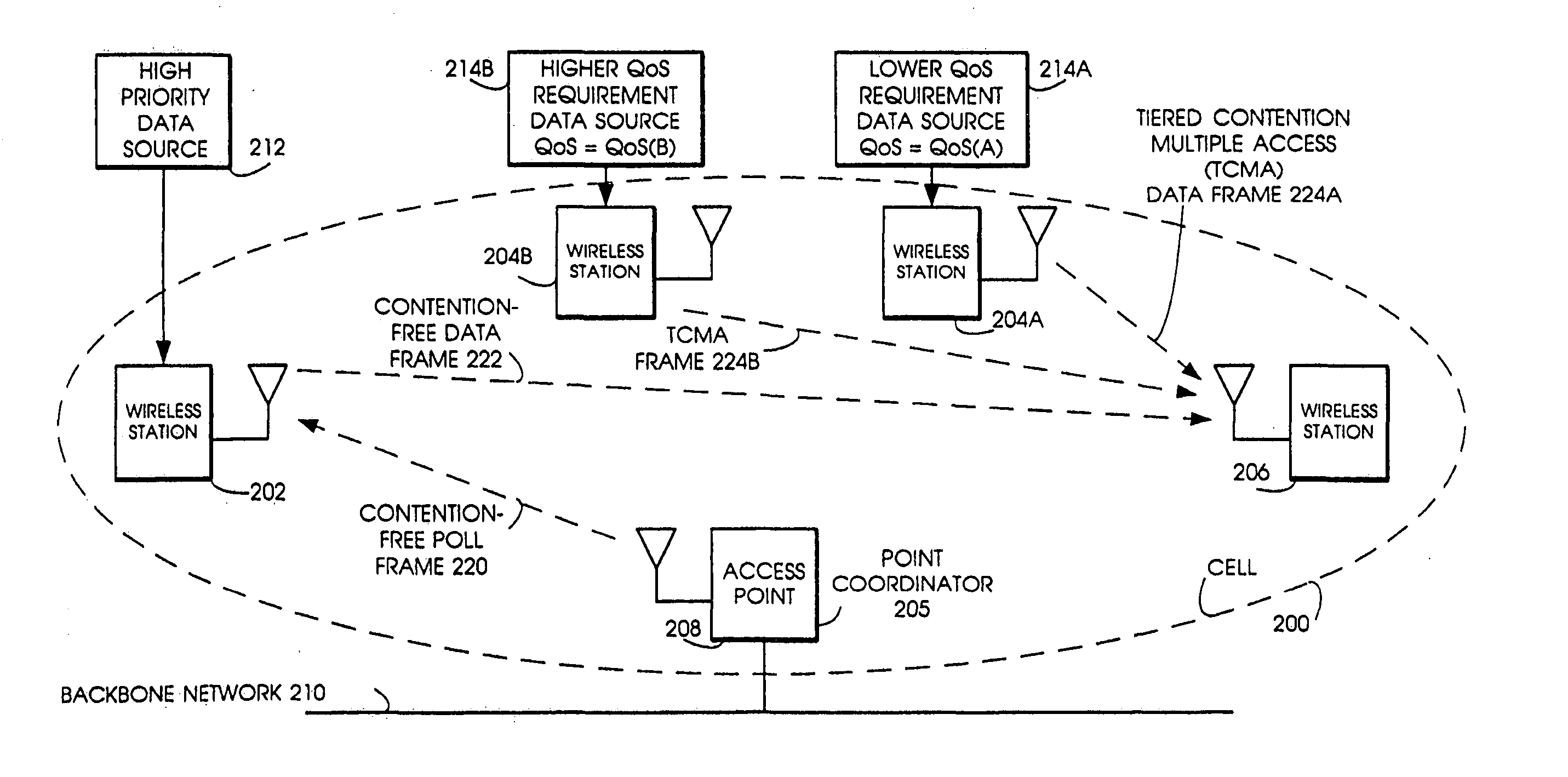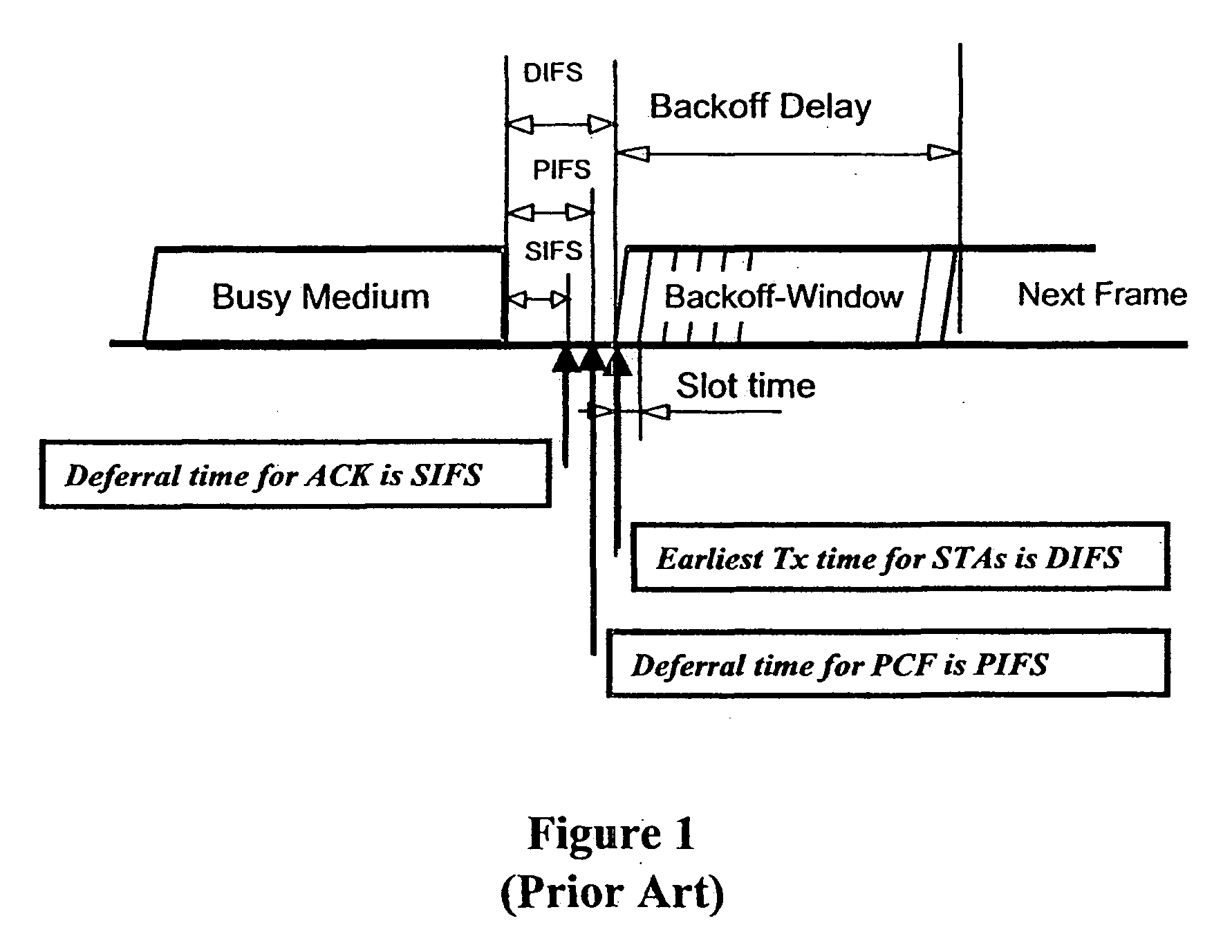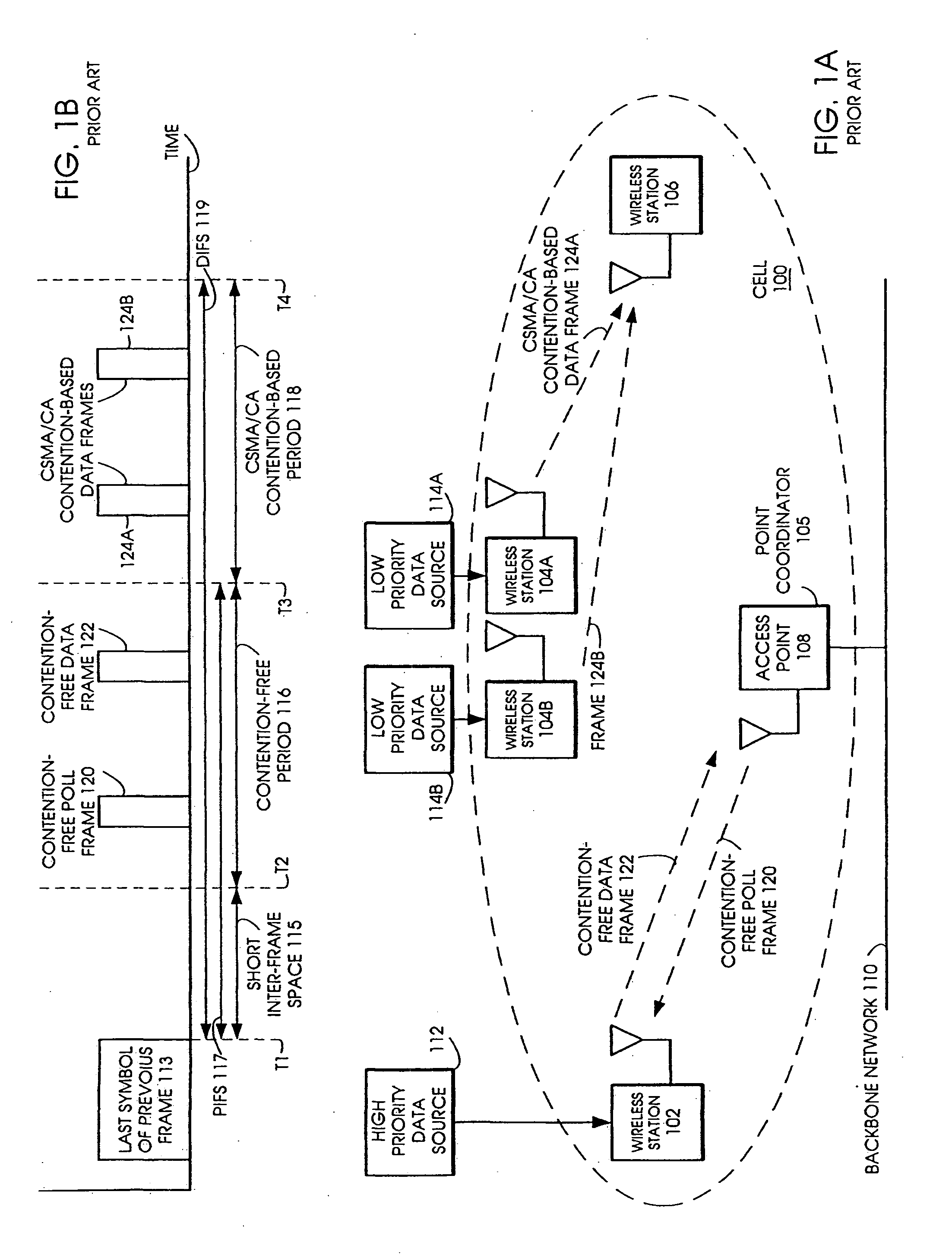Tiered contention multiple access (TCMA): a method for priority-based shared channel access
a shared channel access and contention multiple technology, applied in the field of telecommunication methods, can solve the problems of preventing back-to-back re-transmission, protocol instability, and protocol also suffering from hidden terminal problems, so as to reduce the chance of collision and reduce delays
- Summary
- Abstract
- Description
- Claims
- Application Information
AI Technical Summary
Benefits of technology
Problems solved by technology
Method used
Image
Examples
example
[0244] The following example illustrates how the retrial backoff range can be adjusted to reflect traffic QoS characteristics. The rules for obtaining a new backoff range, (aLower[y],aUpper[y]), are the following: [0245] with each retrial, keep aLower[y] fixed, [0246] adjust aUpper[y] by increasing the contention window by a persistence factor pW[y] that depends on the class y, while [0247] imposing an upper bound CWmax[y]+1 on the contention window size, which is class dependent.
[0248] Consider now two classes, one receiving voice (VO) packets that require latency not exceeding 10 ms, and the other receiving video (VI) packets with a 100 ms maximum latency limit.
[0249] The following parameters are assigned to VO:
[0250] (The restriction to be no less than 1 is imposed on the lower bound of the backoff range in order to ensure backward compatibility with legacy stations.)
PUM
 Login to View More
Login to View More Abstract
Description
Claims
Application Information
 Login to View More
Login to View More - R&D
- Intellectual Property
- Life Sciences
- Materials
- Tech Scout
- Unparalleled Data Quality
- Higher Quality Content
- 60% Fewer Hallucinations
Browse by: Latest US Patents, China's latest patents, Technical Efficacy Thesaurus, Application Domain, Technology Topic, Popular Technical Reports.
© 2025 PatSnap. All rights reserved.Legal|Privacy policy|Modern Slavery Act Transparency Statement|Sitemap|About US| Contact US: help@patsnap.com



